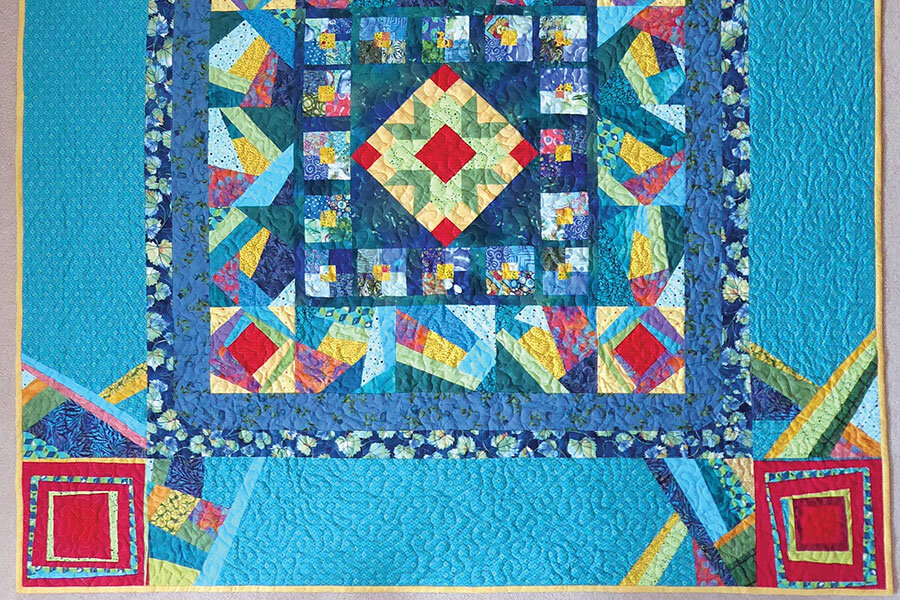A cottony clash of quilters
Loading...
The rain is settling in and getting comfortable for the winter. It’s quiltmaking weather.
This means, as my husband explains it, that I will take a bunch of perfectly good fabric and cut it into little pieces and sew it back together again. Somehow this description seems wrong, but I can’t find the flaw in it anywhere.
It’s just one woman, alone with her thoughts and her seam ripper. Solitary work. Or it was, until last year, when my cousin Annie proposed that we try a round robin quilt. I like robins! I said yes.
Then I said, “What is a round robin quilt?”
A round robin quilt is a collaborative effort. Each participant creates her own center block. Her partner designs a border to go around that block. The quilts are sent back and forth, gaining area with each contribution, and are declared finished when they look to be about the right size.
Or, to put it another way, a round robin quilt is a confrontational effort. Each combatant creates her own center block and her adversary lays siege to it from all sides. The quilts gain area with each pitched battle and are declared finished when someone surrenders.
There’s a lot to like about this. Most of us who quilt pick out our own fabrics for our own patterns and, in general, have complete control over our efforts. If you’re planning to cut out one-inch squares of fabric and spend a whole winter sewing them together, you’re likely to be fussy about it. But what happens when you toss a whole different sensibility into the mix, housed in a whole different person with a whole different fabric stash?
Who knows? Goodbye, control! Goodbye, doing things the same old way you always do!
We made our center blocks and mailed them off to each other. Right away we sensed difference. Excitement. Possibility. Annie loves blue. I got that right away. I like blue in a supporting role. Annie has all the blue fabrics, and I have all the others. She sent me a block that was entirely blue, and I sent her a block that was entirely not.
The war was on.
Oh, how that blue needed brightening! I surrounded her block with spiky turquoise and yellow triangles to wake it up. It worked: They nearly bugled. I sent it off. Annie briefly lost consciousness upon receipt, but recovered quickly.
Meanwhile, she’d had a look at my center block, all green and yellow and red, and thought: “How can I tone this down?” Annie located a fabric with a dab of green in it that was still overwhelmingly blue, and she set my square in it, a tropical island floating in a deep, forbidding ocean.
Then she tamped down her welling horror over the yellow insurrection on her quilt and gave in to the turquoise theme, but she still had the willies. She framed the whole lot in dark blue again just so she could get some sleep.
She mailed it back. I had a look and realized instantly that what this needed was more yellow spikes. Done! I sent hers away and received an email with an unfamiliar but desperate-looking emoji. She’ll be fine, I thought, if she gets a little air.
I was stumped about what to do with my quilt, which was now predominantly dark blue, and eventually I sent in troops in every non-blue color there is and marched them around the field, setting bright red pickets at the corners. I fired it off, and it came back with two blue borders representing a plea for serenity in a combustible world.
Neither of us is ending up with a quilt we would have made ourselves. And we love that. Why make an ordinary quilt when you can have one that looks like Meemaw made it after she sat on her spectacles?
We’re doing it this winter, too, because you can’t tickle yourself. That’s the thing about being completely in charge. Even if your project turns out fine, there’s this little part of you that looks at it and says, “Well, sure, but I totally saw that coming.”
Sometimes you need to lose control just to set yourself free.







